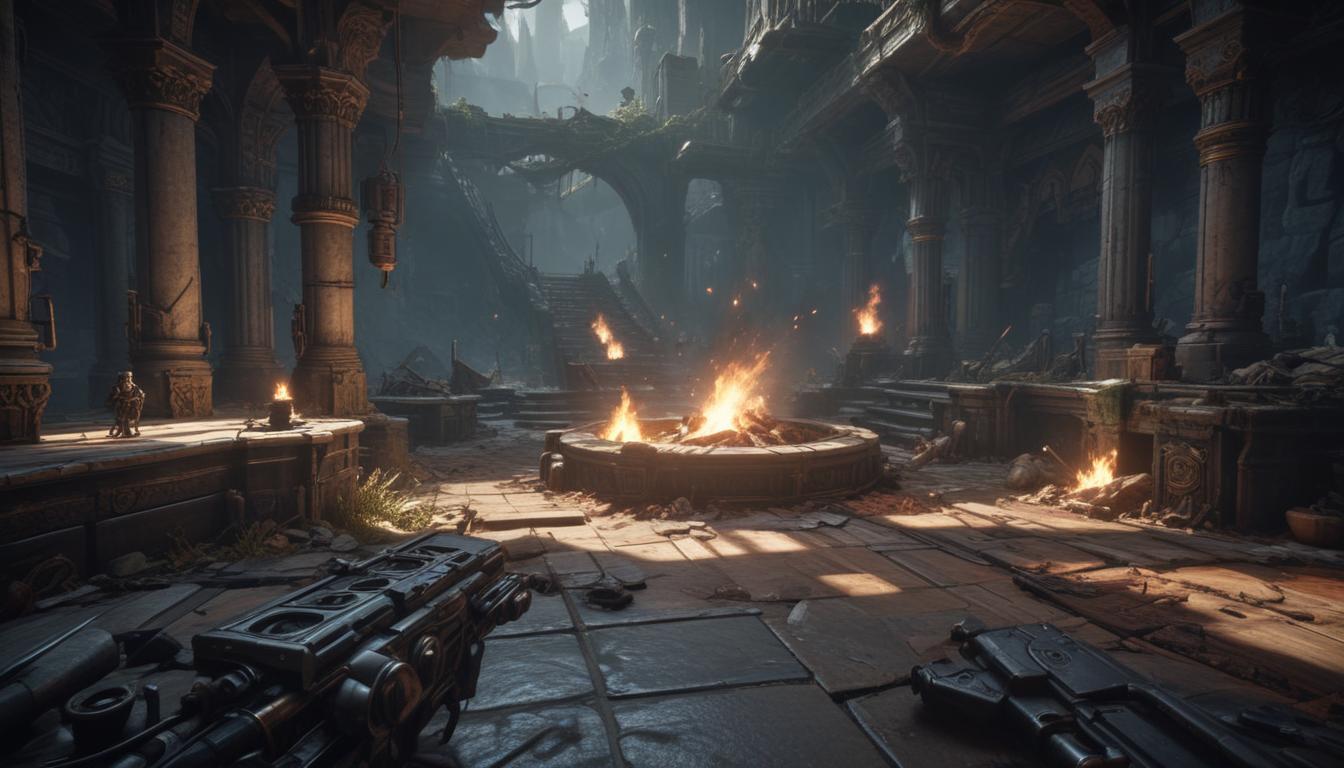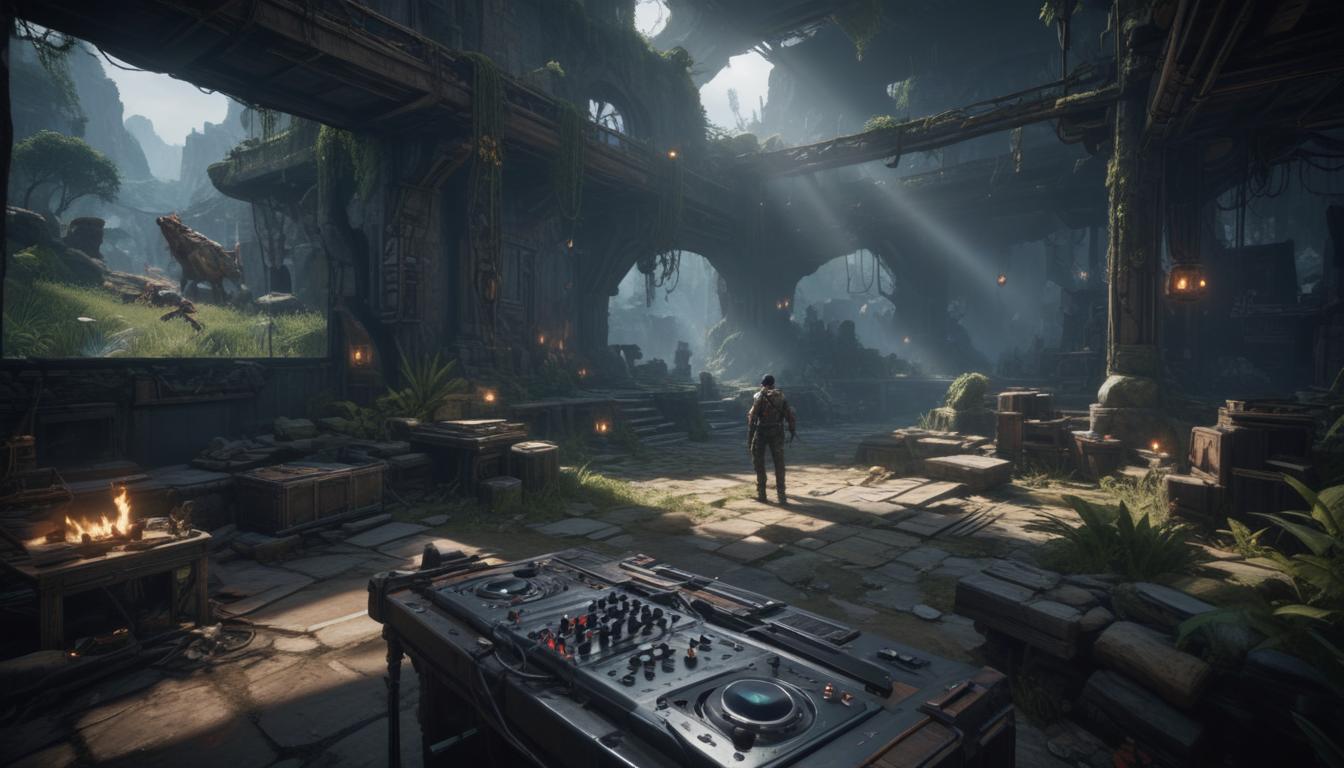Now Reading: Level Up Your Game Audio Programming
- 01
Level Up Your Game Audio Programming
Level Up Your Game Audio Programming

Have you ever played a game with breathtaking graphics and flawless mechanics, yet felt something was missing? The world felt sterile, the action lacked punch, and the emotional moments fell flat. Often, the culprit is underdeveloped audio. Many developers pour their hearts into visuals and gameplay, treating sound as a final-touch afterthought. This approach leaves a massive amount of potential on the table, as audio is not just background noise; it is a fundamental pillar of immersion, feedback, and emotional storytelling. If you’ve struggled to make your game’s soundscape as compelling as its visuals, you are not alone.
The good news is that learning audio programming is more accessible than ever. You don’t need to be a sound engineer to implement powerful audio systems that react to gameplay and pull the player deeper into your world. This guide will demystify the core concepts of audio programming, from the basic act of playing a sound to creating complex, dynamic soundscapes. We will explore the essential building blocks of a game audio engine and the tools that can streamline your workflow, empowering you to transform your game from a silent film into a living, breathing experience.
The Unseen Power of Game Audio
Audio in games serves a far greater purpose than simple decoration. At its most basic level, it is a critical feedback mechanism. The satisfying thwack of a sword hitting its target, the distinct footsteps of an approaching enemy, or the subtle chime of collecting an item are all vital pieces of information. They confirm player actions, warn of danger, and guide behavior without ever cluttering the visual interface. A well-designed audio system communicates essential gameplay information intuitively and instantly, making the experience smoother and more responsive.
Beyond its functional role, audio is arguably the most powerful tool for shaping a game’s emotional tone and atmosphere. The unsettling ambient drone in a horror game can create more tension than any monster lurking in the shadows. The swelling, heroic score during a final boss battle elevates the conflict into an epic confrontation. Sound design and music work together to build a deep, subconscious connection with the player, dictating whether a space feels safe or threatening, whether a moment is triumphant or tragic. It is the invisible force that directs the player’s feelings and solidifies their place within the game world.
The Building Blocks of a Game Audio Engine
Every game that makes sound relies on an audio engine. This can be a system built directly into a larger game engine like Unity or Unreal, a third-party tool, or a custom-coded solution. Its primary job is to act as the central nervous system for all things sound, managing the loading, playing, and real-time manipulation of every audio asset in the game. Understanding its core components is the first step toward mastering audio programming.
An audio programmer’s work revolves around commanding this engine to perform specific tasks in response to game events. This involves more than just hitting “play” on a music track. You will be responsible for managing memory by loading and unloading sounds, applying effects based on the game’s state, positioning sounds within a 3D world, and blending multiple audio sources into a clean, coherent mix. These fundamental capabilities are the building blocks for creating a truly dynamic and immersive sonic experience.
Loading and Playing Sounds The Foundation
The most fundamental task of any audio engine is loading an audio file and playing it. This process involves reading a compressed format like OGG or MP3, or an uncompressed format like WAV, from the disk and preparing it for playback. For short, frequently used sound effects like gunshots or footsteps, these files are typically loaded entirely into the computer’s memory (RAM) so they can be triggered instantly with no delay. This ensures that crucial gameplay feedback is immediate and satisfying.
For longer files, such as background music or lengthy ambient tracks, loading the entire file into memory would be inefficient and wasteful. Instead, these sounds are streamed. Streaming involves loading small chunks of the audio file into a buffer, playing that chunk, and then loading the next one just in time. This process is seamless to the player but is far more memory-friendly. As a programmer, you will also control basic properties like volume, pitch, and looping, which form the foundation for all advanced audio behaviors.
Spatial Audio Creating a 3D World
Spatial or positional audio is what makes a game world feel like a real, three-dimensional space. It is the technique used to make a sound appear as if it is coming from a specific location relative to the player. The two most important concepts in spatial audio are attenuation and panning. Attenuation is the natural reduction in a sound’s volume as the listener moves farther away from its source. Panning controls the balance of a sound between the left and right speakers, helping the player pinpoint its direction. Together, these two elements allow a player to close their eyes and still know where an enemy is.
More advanced systems build on this foundation to create even more believable environments. The Doppler effect, for instance, can be implemented to realistically shift the pitch of a fast-moving object, like a car or rocket, as it flies past the player. Furthermore, you can define reverb zones in your game levels. A sound originating inside a cave will have a different echo and character than a sound in an open field or a metal-walled hallway. Implementing these details is what separates a flat audio experience from one that is truly immersive and convincing.
Dynamic Audio and Interactive Music
Dynamic audio is sound that intelligently adapts to what is happening in the game. Instead of a single combat track that loops endlessly, an interactive music system might change based on the player’s situation. For example, a quiet exploration theme could seamlessly transition into a tense, percussive track the moment an enemy spots the player. This makes the soundtrack feel like a living part of the experience rather than a static layer placed on top of it.
There are two common techniques for achieving this. Horizontal re-orchestration involves switching between different but related musical cues. The system might transition from the “exploration” track to the “combat” track, ensuring the shift is musically smooth. Vertical re-orchestration is even more dynamic; it involves a single piece of music composed of multiple instrumental layers (e.g., strings, percussion, brass). As the tension in the game rises, the audio engine can fade in more intense layers, like heavy drums and aggressive brass, and then fade them out when the danger has passed. This allows for an incredibly nuanced soundtrack that perfectly matches the on-screen action.

Your First Steps in Game Audio Programming
Jumping into audio programming doesn’t mean you have to build an entire audio engine from scratch. The best way to begin is by using the built-in audio features of a modern game engine like Unity or Unreal. These engines provide high-level, component-based systems that handle all the complex, low-level processing for you. Your first goal should be a simple one learn how to trigger a sound effect when the player performs an action, like jumping or pressing a button.
Once you have mastered the basics of playing sounds, start experimenting. Attach an audio source component to a moving object in your scene and listen to how the 3D spatialization works as it moves around the player. Try changing a sound’s pitch based on a variable, like the player’s speed. Then, create a simple script that fades between two different music tracks when the player enters a specific area. By starting small and building on your successes, you will gradually develop the skills to craft the rich, reactive soundscapes that make great games unforgettable.


































